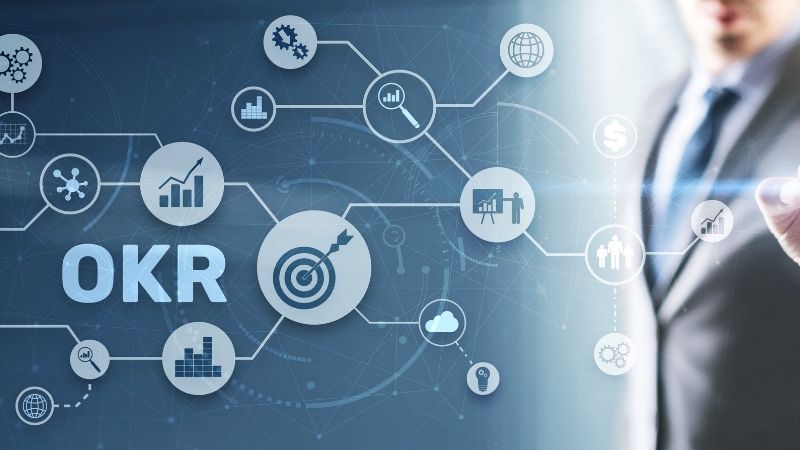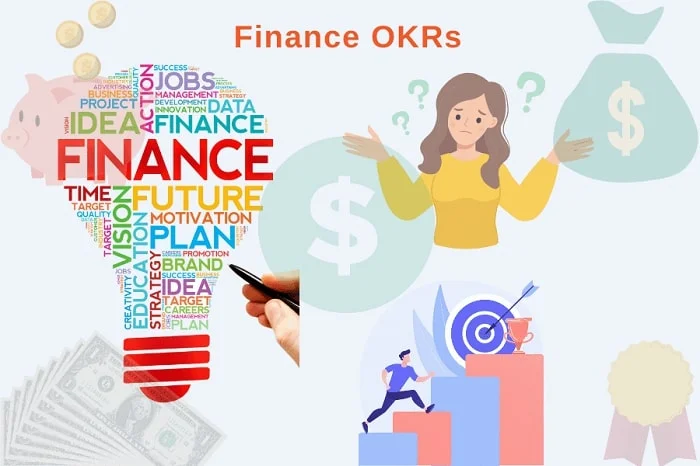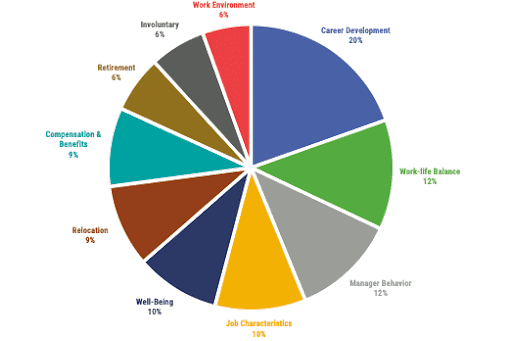“A mission keeps you on the rails. The OKRs provide focus and milestones.” -Christina Wodtke
The world of business is goal-oriented. Every business organization and different teams within the company have their own goals to chase. These goals are in alignment with the overall vision and mission of the company. If we observe closely, the task of setting goals is easier, but the task of accomplishing them is challenging.
To continue, while pursuing goals, our vision often gets blurred as we only know the finish line. We know where we want to go, but we don’t often know how far we have come or how close we have come to our final destination. Consequently, a lack of a sense of progress inhibits our motivation.
Realizing these things, John Doerr, one of the richest American investors and venture capitalists, came up with the term, “Objectives and Key Results.” OKRs help you set measurable goals. When you measure your goals, every day is a saga of progress that takes you ahead toward your final objectives. To validate, as per statistics, 95% of the U.S. adults who use the OKRs goal-setting framework know and understand how their work contributes to achieving their company’s business objectives.
However, if your team doesn’t feel inspired to meet OKRs, despite setting the best key results to achieve along the way, you cannot meet your objectives as per the schedule. This implies that when it comes to accomplishing the OKRs, a lot depends on how motivated your team is.
This blog provides 9 refreshing ways to inspire your team to achieve their OKRs.
9 ways to encourage your team to meet OKRs
Involve your team in the goal-setting process
This is one of the best ways to motivate your team. Involve every team member in the goal-setting process. Consider their ideas, opinions, and visions when it comes to setting goals. Even if you have some predefined goals, ask your teammates what they think about the key results that you should achieve while progressing towards your ultimate goal. This is important because when you make your team feel heard, you inspire them to give their best every day.
As they answer these questions, you can try to link their goals and aspirations with the team objectives and then get their assistance in defining the key results. Moreover, when your team members see that you have set their suggested key results, they feel elated. Consequently, they feel motivated to achieve those goals.
Celebrate every milestone accomplished
Don’t be deluded by the idea that only big milestones are to be celebrated. No, that’s not how it is. You should celebrate every milestone your team accomplishes on the path to achieving their objectives. Whether it is big or small, celebrate it. These celebrations are motivation boosters. They are a token of praise for your team’s efforts and motivate them to perform even better and pave their way towards many more such celebrations.
Furthermore, every celebration should also include a short gap analysis where you all together see where you have reached and how far you still have to go. This analysis will gear everyone up for the next mission.
Exhibit trust in your team’s capabilities
Many times, we just need a little external push to evolve into the best possible versions of ourselves. Hence, you should exhibit trust in your team’s capabilities and let everyone know that you are there for them at all times. You should not only express these things through your words, but your actions should demonstrate them.
For example, you can’t say that you trust your team when you engage in micromanagement. If you trust your team, there is no question of micromanagement. You give everyone the autonomy to work freely in the office without any control. As a leader, you have a lot of pressure on your shoulders, but the more you trust your team and delegate responsibilities without micromanaging, the more you’ll feel at ease and the better the overall performance of your team will be.
Communicate effectively
Effective communication leads to effective leadership. It is the key to inspiring your team to achieve their OKRs. When there is a communication gap between you and your team, you aren’t connected with them emotionally. The lack of this emotional connection is one of the prime reasons why often, team members don’t feel as inspired to pursue the goals you want them to pursue.
Given that, you should engage in effective conversations with your team members. These conversations should always be two-way. This will ensure that your team is emotionally inclined towards you and feels encouraged to leave no stone unturned to keep you happy.
Moreover, you should also remind your team about the OKRs to be achieved. This will assist in enhancing their efficiency and will assist you in attaining the SMART goals of your business.
Be a role model for your team: Inspired leaders lead to inspired teams
Whether you believe it or not, your team is a reflection of you. If you exhibit high levels of enthusiasm towards your work, your team will exhibit high levels of enthusiasm too.
Quite the contrary, if you don’t take things seriously, your team doesn’t either. If you exhibit low levels of professionalism, your team will do the same too. In short, your team looks up to you and reflects your personality as a leader. Given that, if you aspire to inspire your team to meet the OKRs, you should be inspired to do the same first.
Incorporate team play sessions into the daily schedule
It is imperative to know that all work and no play makes employees dull workers. Yes, that’s true. When our professional lives get filled with too much work, dullness seeps in.
The best way to prevent that is to incorporate team play sessions into the daily schedule. Devoting 20 to 25 minutes to these play sessions can be a game-changer. Try this out and see the results for yourself. You’ll find your employees happy and energized, which will eventually lead them to meet the OKRs.
Focus on improving team engagement
Did you know that engaged team members are more likely to meet the OKRs? That’s true because engaged team members have a strong inclination not only towards their work but towards their team as well. This inclination inspires them to give their best for themselves and for their team.. Moreover, as per the report, highly engaged businesses successfully generate 21% more profitability compared to non-engaged ones.
Whereas, disengaged team members do the exact opposite. With that said, engaging your team members can go a long way in inspiring them to accomplish the OKRs. Further, below are multiple strategies that you can implement to engage your team members.
- Appreciating everyone for their efforts, however small it isTake
- anonymous feedback to resolve their issues
- Organize happy hours
Establish cordial connections within your team
The relationships between your team members have a significant impact on their overall performance. When you are a part of a team, you are impacted by the relationships with your team members. If you don’t have a good relationship with them, you feel elated in their presence. But, if you have a poor relationship with them, you will feel irritated and agitated in their presence. Your mood obviously impacts your work performance.
Given that, it is imperative for you to focus on the relationships between your team members. The major reason behind the same is that positive, cordial relationships add to the happiness of employees, which further enhances their productivity. To substantiate, according to the University of Oxford, happy employees are 13% more productive and efficient.
Hence, there should be cordial bonds between them if you have to derive the best performance from your team. Further, informal discussions, weekly team outings, and involvement in sports are some of the most effective tactics to form cordial relationships between your team members.
Design your workplace in a captivating manner
The type of workplace we work in also impacts our productivity and potential. If it is chaotic, doesn’t have an appealing appearance, or radiates positive vibes, we can’t function at our full potential. Hence, it is imperative for you to design your workplace in a captivating manner. Try to add some color to your workplace, bring in some plants, and allow your employees to bring their pets if you feel okay. These things will together contribute to uplifting the energy level of your employees, which will eventually help them meet the OKRs.
The above-discussed methods are some of the tried and tested ways to motivate your team to meet their OKRs. Do try them out and see the results for yourself. We hope that these tactics truly impact your team and that you, together, achieve all that you aspire to accomplish.
Author’s Bio
Jessica Robinson is a charismatic corporate leader, a selfless educator, and a versatile content creator. Despite a management degree, her vision behind blogging is not only to follow her passion but to create more informed societies. Her selflessness reflects in every piece of her work on The Speaking Polymath.









![Customer Success OKRs [Importance & Examples]](https://engagedly.com/wp-content/uploads/2020/11/Customer-service.png)
 The benefits associated with OKRs have made it a popular goal-setting tool among all organizations. Here are some of them:
The benefits associated with OKRs have made it a popular goal-setting tool among all organizations. Here are some of them:





























